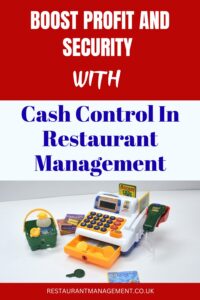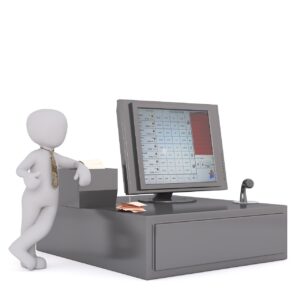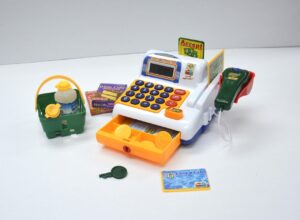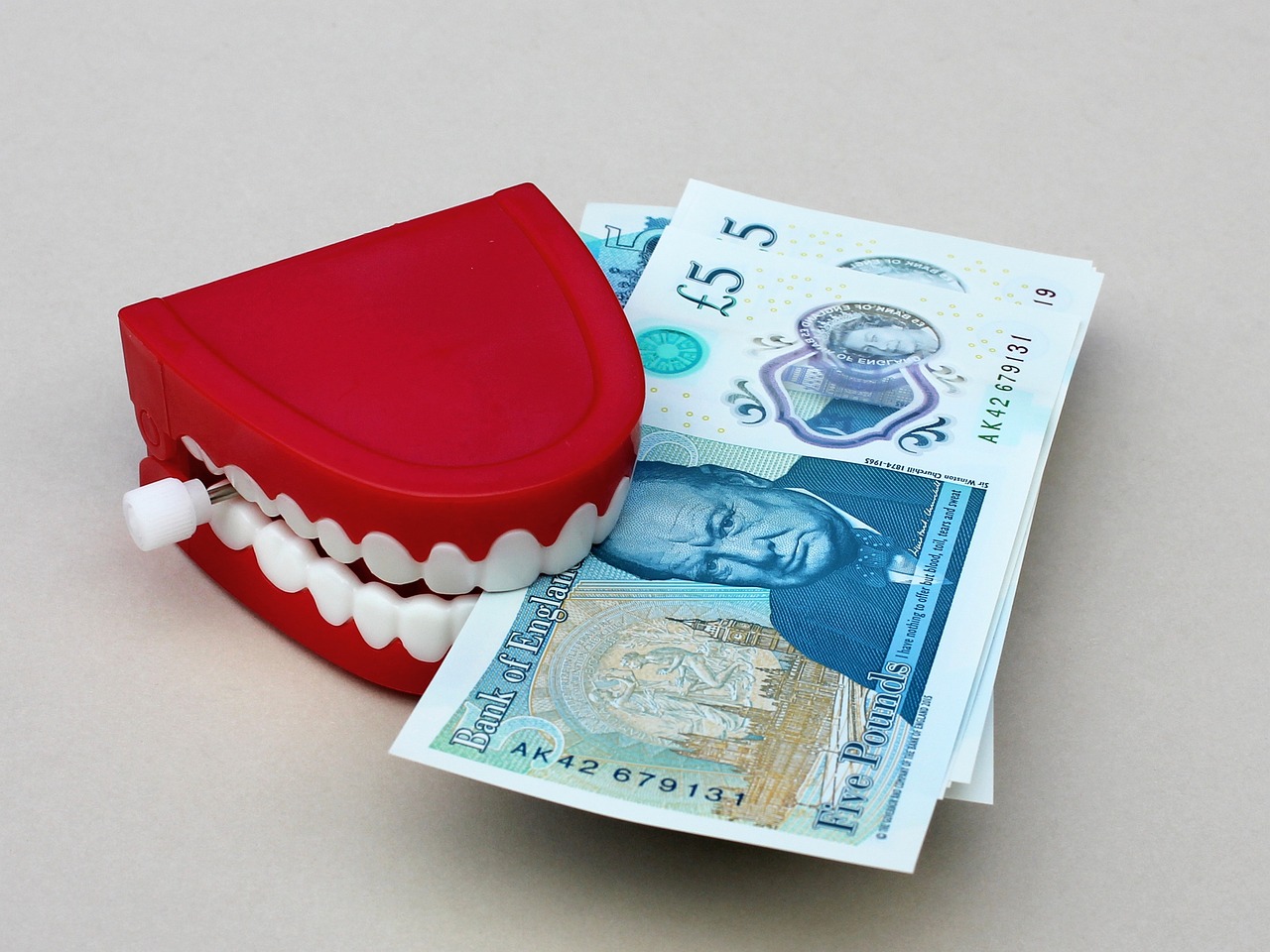Cash Control in Restaurant Management
Why Cash Control Defines Restaurant Success
Running a restaurant isn’t just about great food and good vibes—it’s a business built on hundreds of daily transactions. Cash control in restaurant management is about every bill paid, tip counted, and refund processed, which affects your bottom line. And while passion may fill your dining room, it’s cash control that keeps the lights on.
A good cash management system ensures every cash transaction is tracked, recorded, and handled responsibly. Without it, even busy, profitable restaurants can spiral into chaos—leading to lost money, unexplained shortages, or even internal theft. Good cash control isn’t just about counting money at the end of the night. Effective cash control goes far beyond counting the till at closing time. Embracing responsibility in all cash handling tasks is crucial to help build trust among team members, which makes working together better and allows our operations to run more smoothly.

Understanding the Role of Cash Flow in the Restaurant Industry
Think of cash flow as the heartbeat of your restaurant, if the flow stops, the restaurant dies. When it’s strong and steady, everything runs smoothly—vendors get paid, staff receive their wages on time, and you can confidently invest in your next big idea. But when cash flow falters, the entire operation feels the squeeze.
One of the most common misconceptions among restaurant owners is assuming that profit equals liquidity. You can be “profitable” on paper and still struggle to pay bills on time if your cash flow isn’t adequately managed. Smart cash flow management means keeping a close eye on both inflows and outflows every single day. By doing so, you prevent last-minute scrambles, keep your operations steady, and ensure that your restaurant can grow confidently, not just survive paycheck to paycheck.
Strong Cash Management System
Having a good cash management system is very important for every restaurant. It helps to find small problems before they turn into big ones. A strong cash-handling system has rules and controls that help prevent mistakes, reduce the chance of theft, and make sure that all money transactions are correct and clear.
By leveraging real-time data analytics and automated reporting, this system enhances the integrity of cash flow management and supports informed decision-making across all business units.
Restaurants that follow consistent practices such as cash reconciliation, drawer audits, and safe banking procedures rarely experience the kind of discrepancies that quietly eat away at profits. These systems also make multi-shift operations smoother, ensuring everyone—from servers to managers—takes ownership of their role in handling money. More than anything, a strong system builds trust. It tells your team, investors, and even customers that your restaurant runs on integrity. Cash control, at its core, is about creating a culture of precision and pride in doing things right.
What is the Best Cash Management System in Restaurant Management?
There’s no single “number one” system that suits every restaurant perfectly. However, if I had to recommend the best option on the UK market today for strong cash control features and overall reliability, I would choose Lightspeed Restaurant.
Here are the reasons why it stands out:
- It provides real-time reporting and insights, making it much easier to track cash, sales, and shifts.
- It is designed to support comprehensive restaurant workflows—from sales and payments to inventory management and multi-location operations.
- Its cloud-based infrastructure allows you to monitor and reconcile transactions from anywhere, which helps enforce effective cash control practices such as daily reconciliation and audits.
Nevertheless, it’s crucial to select a system that fits your restaurant’s size, budget, and particular cash management procedures, like shift handovers, cash drops, drawer audits, and safe controls. Here are what I would say are the top five systems:
Best Cash Management System in Restaurant Management
| System | Strengths for Cash Control | Considerations |
| Lightspeed Restaurant | Advanced reporting, strong multi-location support, integrates inventory & sales data so cash flow is more transparent. | Higher cost and steeper learning curve; may be more than smaller venues need. |
| Square POS (UK version) | Easy to get started, good for smaller restaurants; supports cash drawer integration, real-time sales monitoring. | Some advanced cash-control features may be limited; scaling can introduce extra fees. |
| Epos Now | UK-based, designed with hospitality in mind; good front + back-of-house sync helps with cash reconciliation. | Mixed user support feedback; may require extra modules (and extra cost) for full cash-control features. |
| Goodtill | Affordable, iPad-based solution; supports cash register functions, reporting, and integration with accounting software. | Less suitable for very large/multi-location operations; fewer enterprise-level controls. |
| Tevalis | Built for complex venues; strong controls over menus, inventory, and finances—which supports rigorous cash control. | Higher investment required; may be overkill for smaller or simpler restaurants. |
Common Cash Management Challenges
Any restaurant manager would tell you that restaurants face a lot of pressure, especially during busy times, making cash handling significant and prone to mistakes. Common mistakes that can hurt your restaurant include leaving cash registers open, not keeping proper records of refunds, and mismanaging cash drops.
High staff turnover makes it hard to maintain standard cash-handling procedures, which can lead to mistakes and financial problems. The risks of poor cash management go beyond errors. Issues such as employee theft, unauthorised discounts, and improper refunds can seriously harm the business.
It is vital to address these vulnerabilities proactively. Establishing systems that are simple, repeatable, and consistently applied is essential. By ensuring that all employees—regardless of length of service or level of expertise—follow these guidelines, restaurants can better control cash flow and reduce losses.

Building a Clear Cash Control Policy
A good cash control policy outlines how to manage money from when a customer pays to when it is deposited into the bank. Each cashier should have their own cash drawer, check and sign for the money at the start and end of their shift, and follow simple steps to ensure the amounts match at the end of the day.
Managers should verify cash reconciliations daily—checking for overages, shortages, or patterns that might indicate errors or dishonesty. When cash variations exceed set limits, they should be tracked and reviewed immediately. The goal here isn’t to police your team—it’s to build consistency and accountability into every part of the operation.
Designing Smart Cash Handling Procedures
Cash handling needs structure. Each drawer should start with a set float amount, and cashiers should only use their assigned drawers—no exceptions. Managers should conduct at least one surprise audit per shift to ensure everything adds up.
If cash totals exceed the allowed amount, a cash drop should take place. Both the manager and cashier should verify and log it together. These steps may seem tedious, but they protect everyone involved. At the end of each shift, managers should ensure that all forms—such as cash logs, drop records, and reconciliation sheets—are signed and filed. When documentation is 100% complete, it leaves no room for confusion or misplaced accountability.
Technology: Your Secret Weapon in Cash Management
Today’s restaurant tech has made cash control easier and more reliable than ever. Modern POS systems record every sale, void, discount, and refund in real time. Integrated accounting software syncs with those transactions to make reconciliation seamless.
Of course, technology isn’t perfect—systems crash. The Internet goes down. That’s why staff should also know how to handle manual transactions using guest checks or written records during downtime. Train cashiers to stay calm and follow backup procedures. The combination of innovative tech and solid training is unbeatable—it keeps operations moving even when the unexpected happens.
Master Cash Flow Forecasting For Restaurants To Unlock Success
Daily Checkpoints and Routine Audits
Cash integrity isn’t something you verify once—it’s something you protect daily. Every shift should include register verification at opening, mid-shift, and closing. Any discrepancies should be documented and signed by both the manager and cashier.
Unannounced drawer audits keep everyone sharp and honest. When staff know that spot checks can happen anytime, they’re far more careful with every dollar. Managers, too, should sign off on cash control forms during handovers to maintain a transparent chain of accountability. Over time, these simple checkpoints create discipline and trust across the entire team.
Training Your Team to Handle Cash Like Pros
You can have the best system in the world, but it only works if your team follows it. Cash control training should be part of every new hire’s onboarding—and refreshed regularly. Teach cashiers how to count accurately, record cash drops, and handle discrepancies without panic.
Make sure they understand why these steps matter; it’s not about a lack of trust in your people—it’s about protecting the business and ensuring employees’ job security. When your staff feel involved in the team and understand the reasons behind your actions, they are more likely to follow the rules. Furthermore, it is critical to encourage positive behaviour—offering incentives for consistency and honesty promotes a strong and accountable team.
Stopping Theft Before It Starts
The truth? Internal theft can destroy a restaurant faster than bad reviews. Preventing it starts with segregation of duties—no single person should handle every part of a cash transaction. Limit safe access to one manager per shift, require signatures on every handover, and whenever possible, have two people count the safe together.
Monitor reports for red flags—frequent refunds, small overages, or strange timing patterns. Most importantly, deal with discrepancies calmly but firmly to show your team that you take cash management seriously and handle challenges properly, which sets a standard for your team to follow.

Reconciliation: The Heartbeat of Financial Control
To make sure that all money transactions are correct, the shift manager must complete the cash reconciliation process at the end of each shift. Managers and cashiers should work together to balance the cash drawer by carefully confirming alignment with POS data and cross-referencing the cash amounts with supporting documentation.
At this stage, it is also vital to check refunds, discounts, and cancellations to ensure all entries are accounted for without discrepancies. This diligent process not only maintains accurate financial records but also upholds the restaurant’s financial integrity.
Managers then sign off on the deposit, ensuring that all funds are ready for the bank run. Daily reconciliation stops small mistakes from snowballing into big ones. Weekly reviews, on the other hand, help spot trends—like recurring shortages or high cash variation. The objective is to cultivate a habit of accuracy and consistency.
Safe and Secure: Protecting the Cash
To keep money safe, managers should do a few important things:
- Only one manager can use the safe at a time during each shift.
- If a different manager takes over, they need to fill out a form that shows who is in charge of the money.
- Always count the money in the safe behind closed doors and without distractions.
When preparing deposits, double-check that every slip and signature is complete. Deposits should be made daily—ideally before the restaurant opens or immediately after closing. Whether managers deliver deposits personally or via a secure pickup, make sure it’s done by two people whenever possible. These small precautions make a big difference in keeping cash safe.
Petty Cash: Small Fund, Big Responsibility
Petty cash might not get much attention, but it’s essential to keep it in check! Use it for small, genuine expenses—like those unexpected supplies or last-minute buys—and remember to ask for receipts. A simple petty cash log can help you stay organised, so make sure to check in on it regularly. Happy spending!
By maintaining transparency and accountability, you’ll prevent “miscellaneous” spending from draining your resources. When every dollar is tracked, even small funds stay under control.
How To Manage Restaurant Finance, Especially With A Cash-flow Crunch
Mastering Vendor Payments and Payroll Timing
Managing cash is important, and it isn’t just about what happens at the cash register. How you pay your suppliers and employees affects how money flows in and out of your business. It’s important to pay your vendors at the right time—neither too soon nor too late. Also, make sure to schedule employee paychecks to match when you earn money.
This timing keeps your cash flow predictable and prevents shortfalls. Negotiating flexible terms with suppliers or setting automated payments through your accounting system can help smooth out your financial rhythm.
Going Cashless (or Close to It)
More restaurants are embracing cashless or hybrid payment systems, and for good reason—they’re faster, safer, and easier to track. Digital payments mean fewer errors, faster reconciliations, and less temptation for theft.
Still, it’s wise to maintain a small cash capacity for customers who prefer it. Just ensure credit card processing and digital transaction systems are regularly checked for errors. The less physical cash on hand, the cleaner and more secure your financial operations will be.
Using Data to Predict Cash Flow
Data is essential for managing cash. Point of Sale (POS) systems and accounting tools can help you see when money is at its highest and lowest points, as well as where there are problems. You can use this information to predict busy times, plan your inventory, and schedule your staff correctly.
If Fridays are booming, you’ll need extra change and prep. If Mondays are slow, tighten spending. A data-informed cash flow strategy keeps your restaurant agile, proactive, and financially steady.

Connecting Cash and Inventory
Cash flow and inventory are closely connected. If you order too much, have waste, or experience theft, your money can run out quickly. Linking your sales system and inventory helps you see what items are selling and what are not.
When you match your spending to what customers really want, you reduce waste and save money, enabling you to buy smarter. The outcome is better profits and fewer unexpected money problems.
Compliance, Taxes, and Record Keeping
Paperwork might not be glamorous, but it’s essential. Every refund, coupon, and deposit slip should be signed, stored, and easily traceable. Complete documentation keeps you compliant with tax laws and ready for audits.
Automated record-keeping systems make this easier and reduce human error. Clean books don’t just satisfy the IRS—they reflect your professionalism and strengthen your restaurant’s credibility.
Building a Culture of Financial Integrity
Cash control isn’t about micromanagement – it’s about respect. Respect for your business, your employees, and your customers. When everyone understands that managing money well keeps the doors open and the paychecks coming, accountability becomes part of the culture.
With training, technology, and a touch of discipline, cash management becomes a shared commitment rather than a chore. That’s the secret to lasting restaurant success – not just making money, but managing it wisely every single day.
Here’s The Most Profitable Restaurant Model In The UK Right Now
Related articles:
Cash Flow Forecasting Restaurants
Conclusion
In the busy world of restaurants, keeping a firm handle on finances is very important. Intelligent cash control helps successful restaurants thrive, while others that struggle may struggle. It’s more than a daily routine—it’s the framework that protects profits, prevents losses, and builds trust at every level of the operation. By establishing clear rules, providing regular training, and using reliable technology, restaurant owners and managers can keep their operations open and secure. By tracking every transaction and following each step of the cash reconciliation process, restaurants would find it easier to succeed in the long run. In the end, effective cash control isn’t just about balancing the books—it’s about creating a culture of accountability that keeps your restaurant secure, efficient, and ready to grow.
Unlock Success: Awesome Tactics For Cash Flow For Cafe Triumph


